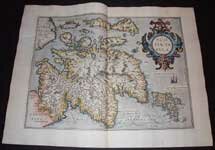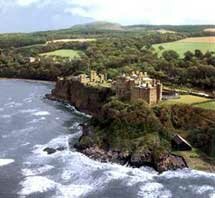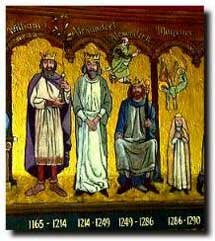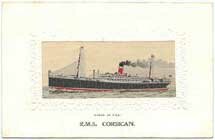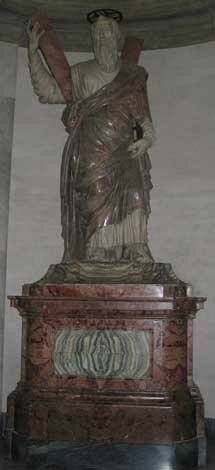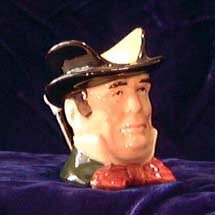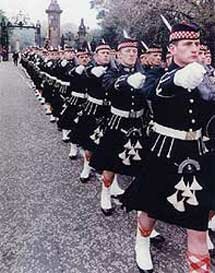|

|
|
HERO'S AND FAMOUS SCOTS INTRODUCTION
The intention of this section is not to depict every Scot who ever lived but to pick certain people out from the crowd to be included in this section. The section is not complete and will be added to as the opportunities become available. One of the objects of the site was to try to stay within certain boundaries, we did not intend to have anyone included after the year 1850, but there are acceptations to every rule and this one has been broken on a few occasions when it was felt certain individuals could not be omitted from the list. If any readers of this section have anyone in mind who they think should be included, please contact us and we will be delighted to look at the person concerned. People will be added in the future and some may be taken away, to allow the site to be as current as possible. The site's intention is to cover every aspect of Scottish life. Hero's, Finance, The Arts, explorers, and of course Scotland 's world famous inventors.
|
|
Click below to find other Heroes & Famous Scots
|
|
|
|
|
Heroes & Famous Scots (A)
|
|
The history of effective surveying did not really start until the time of John Adair. He was a great surveyor and cartographer; he was responsible for the creation of completed maps in the counties and areas adjoining the River Forth. Adair was also the person who produced the first reliable maps of the western Rivers in Scotland .
|
|
| The seafarers of Scotland were thankful to Adair when he completed and published part one of his � Descriptions of the Seacoast and Islands of Scotland, with Large and Exact Maps, for the Use of Seamen' Adair's work was found to be so modern and progressive for that period of the eighteenth century, that it inspired others to do the same type of work |
|
|
| |
|
The Adam style of design became famous all over the world. Many of the United States of Americas Universities and Colleges owe much to the influence of the Adams brothers. Robert Adams was to become one of the greatest ever neo-classical architects and designers that Scotland would ever produce. With his brother James, they developed a style unique to themselves in architecture, interior design and also in furniture production. Their father was also an architect his name was William, but he never had the influence of his two famous sons.
|
|
| The brothers travelled abroad to inspire design ideas, and to gain experience as architects. They settled in Rome, and worked there for some time. Robert became the most famous of the two and his amazing style would dominate British architecture for many decades to come. Roberts Forte was in the remodeling of the Nobility country estates. His work at Syon House is considered to be a masterpiece. So too are his designs at Alnwick castle, Hulne Abbey and the Northumberland House in London. Much of Robert's work can be seen in Edinburgh for instance Charlotte Square, Edinburgh University buildings and the Register House. Robert Adams most famous design in Scotland is of course the famous Culzean castle which captured the classical and gothic beauty much loved in that time period. |
|
| |
|
Affleck, Thomas (1745-1795)
|
|
Thomas Affleck was one of the original Chippendale stylists. He was not removing his clothes but producing furniture in that type of design. Affleck was known to be an outstanding example of the cabinetmaker's art. In that period of the eighteenth century huge amounts of exceptional furniture was being produced not only in Britain but in the American Colonies too. Philadelphia was a prime example of this type of culture and the place was in fact known as the largest English speaking city in the world next to London . Affleck had been born in Aberdeen in eastern Scotland , and had moved to America at an early age. He provided fine furniture for the people of his adopted city, and in fact designed and produced furniture for the Governor of Philadelphia who was John Penn.
|
|
|
|
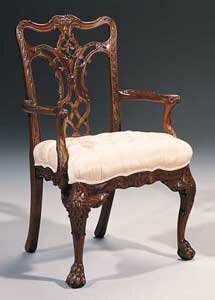 |
| He was very popular among all the elite of the city and his work was found in all the best houses. Affleck had a profound influence on American furniture design for many years and good examples of his craftsmanship may be found in Art Museums and private collections in Philadelphia, New York, and Boston. |
|
| |
| Alexander King of Scots (1247-1286) |
|
Alexander died a strange death; he fell from his horse between Kinghorn, and Burntisland as he tried to get home on a stormy night in March 1286. He was one of three royal Alexander's who was to become King of Scots between the years 1107 and the year 1286. Alexander the third was the most dynamic of the three and it was because of his great influence, and autocratic rule, that Scotland became an independent Kingdom. In the preceding years before Alexander's time the western isles of Scotland had been ruled ruthlessly by the Norse men from Norway . When Alexander had mustered his strength and forces it was inevitable that a battle would take place between him and King Haakon. Alexander the third stopped the Norse King from invading anymore of the Scottish mainland.
|
|
| He then went on to beat the great Norse warrior at the battle of Largs where Alexander sank the Kings fleet of ships. Haakon's son Magnus the fifth was then forced into something that he hated to do. He had to cede the Hebrides and the Isle of Man to Alexander of Scotland. Alexander the third was a great calming influence on the war like people of Scotland and he brought peace to this troubled land. People look back at history and claim Alexander's reign as a �Golden Age for Scotland � The picture depicts King William on the left followed by Alexander second and Alexander the third who is seated. The fourth person is Queen Margaret |
|
| |
|
Allan, Sir Hugh (1810-1882)
|
|
Sir Hugh Allan was born in the small Ayrshire town of Saltcoats . The huge Country of Canada is forever in his debit as he heaped commercial success after success to the province through his business ventures. His brother Andrew worked with him to produce the great shipbuilding and financial family business. They founded the Allan line of wonderful ships and operated between the cities of Montreal in Canada and Liverpool and Glasgow in Britain .
|
|
| In the year of 1872 Sir Hugh and his company were awarded a transcontinental charter for the Canadian Pacific Railroad. However scandal was to follow when it was revealed that Sir Hugh had secretly backed the Conservative party in the form of Sir John MacDonald. The government were brought down and forced to resign, and along with the government went Sir Hugh's Charter. The aftermath was to see the closure of the Allan shipping line. Sir Hugh didn't let the disappointment stand in his way and went on to develop huge influence in how Canada's shipping and her seaports were run. He was responsible for the huge influx of European immigrants, but most of them were actually from Scotland and Ireland . |
|
| |
|
Andrew, Saint (First Century A.D.)
|
|
The Scots are very proud to have Saint Andrew as their patron saint. He was considered to be one of the twelve apostles of Jesus Christ and a brother and fellow fisherman to Saint Peter. Saint Andrew is also Patron Saint to Greece and parts of Russia . He is sometimes called by an ancient name of the Byzantine tradition � First Called' Saint Andrew was reputed to have been crucified on an �X� shaped cross. Scottish tradition takes their flag from this shape. It is said that when the great Pictish King Angus was faced with a Northumbrian army, who were invading Scotland . He had been praying to god for some divine sign to lead his army to battle when suddenly a white Cross appeared on the azure coloured sky. Angus took this as a sign from god and adopted the colours to his flag poles. Angus won a famous victory and declared Saint Andrew to be Patron saint of Scotland . This was not in fact officially adopted until the year 1314 when King Robert the Bruce freed the Scots by defeating a numerically superior English army which was led by Edward the second. �The greatest army in Christendom� was sent fleeing for their very lives back across the border. The declaration of Arbroath named Saint Andrew as the official Patron saint of Scotland and the Saltire as it is known became the National flag in 1385. There is another story about Saint Andrew and his remains.
|
|
| The Town of Saint Andrews on the fife coast is obviously named after him. His relics are said to have been brought there by a fourth century monk named Saint Regulus (Saint Rule) after he had communication with an angel who instructed the monk to go to the North West of Scotland. Where he stopped is now the town of Saint Andrews . |
|
| |
| Arbuthnot, John (1667-1735) |
|
John Arbuthnot was born Kincardineshire on the east Coast of Scotland . John was a great mathematician and Physician, but he will also be fondly remembered for his most famous role, that of satirist. John Arbuthnot was actually physician to Queen Anne, and was a favourite in royal circles of the time. He was also a writer of some repute and was known for his caricatures of people in the news. Just as America has Uncle Sam, John was to create the icon �John Bull� for England . John Arbuthnot collected all the caricatures of John Bull, and presented them as �An honest plain dealing man, choleric, bold and of a very unconstant temper.�
|
|
|
This caricature became well known in England and was accepted by the people as a role model for Englishmen everywhere.
John was also well known for his hatred of double talk, especially at government and academic level. He fought and campaigned against this, and was instrumental in the publishing of a book by Martinus Scriblerus, which was a mocking exposure of the gobbledy-gook spoken by people in authority.
|
|
| |
|
Argyll, Archibald Campbell, first Marquis and eighth Earl (1607-1661)
|
| Archibald Campbell was known to be a Scottish patriot and a believer in an independent Scottish nation separate in all ways form English influence. Archibald Campbell fought against the union of the parliaments in 1707 as would any real Scot. Scotland was granted a devolved parliament in 1997 but Campbell would not have been pleased to be alive to see this happen as he believed that to have a parliament you had to have total power with no input from another country ( England ). Campbell was the leader of the anti-royalist party during the English civil war in the years 1642-1651. King Charles had taken a stand against his parliament which would later cost him dear. Campbell guided the Scots and in fact was responsible for buying his Nation a few more years of independence before they were sold out by the very people who were supposed to look after them. Campbell attempted to abolish the Episcopacy in Scotland (religious domination by England's established church). |
|
Campbell signed the National Covenant which pledged to defend Scottish Presbyterianism against the might of England's sovereign, who was trying to force his countries religion onto the Scots. Archibald Campbell went on to form an alliance with the infamous Oliver Cromwell after Campbell had defeated Montrose at Philiphaugh in 1645. They went on to establish a new government but sadly for Campbell when Charles the second was restored to the throne, Campbell was executed for the part he played in forming the commonwealth.
|
|
|
| |
|
The Argyll and Sutherland Highlanders
|
|
The Argyll's are one of the most famous regiments to have come out of Scotland . Their very name conjures up pictures of stout-hearted Highlanders fighting for a cause that they believe in. Fierce heroic fighting Scots, with a never say die mentality.
The Regiment was first formed as the 91 st Argyllshire Highlanders in the year 1794; they fought and saw service at places like the South African Peninsula , Waterloo , and India .
|
|
There was a regiment formed in the late eighteenth century called, the 93 rd . Sutherland Highlanders, they saw service and action in New Orleans, Crimea, including Balaklava, where the Regiment earned their famous nickname of � The Thin Red Line' . They also fought in the Indian Mutiny, where the Regiment won no fewer than seven Victoria Crosses.
In the year 1881 the two famous Scottish Regiments were amalgamated to form the Argyll and Sutherland Highlanders (Princess Louise).
The Regiments went on to united glory in South Africa during the Zulu uprising, the Boer War, India and the Far East .
|
|
|
During the First World War (The War to End All Wars) the Regiment had six Battalions and in the Second World War they had Nine Battalions operational.
Since winning the seven Victoria crosses in India the Regiment have added another nine to that proud total serving in places across the globe.
Since the ceasing of hostilities in the Second World war the Regiment have served with honour in Palestine, Korea, British Guiana, Berlin, Suez, Cyprus, Malaya and Singapore, Borneo, Aden, Germany, Falkland Islands, England, Scotland, and Northern Ireland. There biggest threat now comes from their own Government who is threatening to amalgamate all the different Scottish Regiments into one �Super Regiment� the idea of this is to save money.
|
|
|
Click below to find other Heroes & Famous Scots
|
|
Back to Top
|

